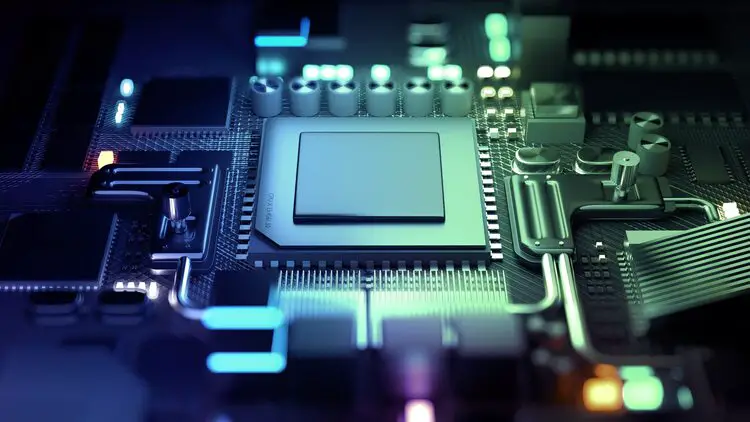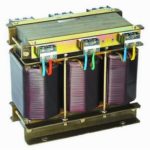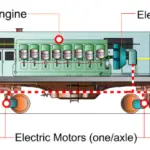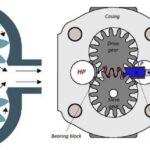FPGA engineers like solving tough problems and have a passion for using the latest technology to create new products. Here’s some information about the FPGA market and advice on entering a career working with FPGAs. This considerable growth will be based on many factors including: Lower engineering costs and reduced time to market when compared with ASICs, Expanding autonomous vehicle market, Increased demand for AI and IoT technology, and Developments in 5G technology. Want to learn more part number of FPGA, you can look at Vemeko FPGA to see more detailed information about FPGA.

FPGA Applications
Consumer, automotive, and industrial products in many different industries employ FPGAs. Signal processing, biomedical instruments, device controllers, machine vision systems, test and measurement tools, software-defined radio, random logic, medical imaging, cryptography, hardware emulation, voice recognition, and other applications are examples of specific applications. Applications for consumer electronics include security systems, driverless vehicles, displays, cameras, and video and image processing. Additionally, FPGAs are employed in a wide range of commercial applications, including servers and a number of industries like aerospace and defense, medical electronics, and distributed payment systems. And because FPGAs are used in many market segments and industries, the demand for talented engineers will comes from many areas including:
- Telecommunications
- Automotive
- Consumer products
- Industrial
- Military and Aerospace
- Data Processing
What Should FPGA Engineers Know?
Problem Solver: Problem-solvers are FPGA design engineers. They are expected to come up with solutions while juggling constraints like financial constraints, legal requirements, and other factors. Similar to a jigsaw puzzle, an FPGA system requires problem-solving abilities in addition to technical expertise.
Eye for Detail: An FPGA can be a component of a complex system made up of many different parts. Small beginning errors might turn into major issues and jeopardize the success of the entire project. Throughout the development process, a designer must be able to think through several scenarios and pay close attention to details.
Scripting and Coding: Careers as FPGA design engineers demand advanced programming abilities. Designers should be able to program in languages like Python. Additionally, they will have to employ a programming language like Verilog or VHDL. Design engineers frequently collaborate and work closely with different members of software teams; as a result, they need to be able to speak many languages.
Design Tools: The typical industry software and design tools must be well-understood by FPGA design engineers. Applications are virtually simulated and digital prototypes are produced using software like Matlab, Simulink, Octave, and Verdi, among others.
Creativity: Engineers working on FPGA design must be able to think beyond the box. Effective designers always try new things and evolve by combining their knowledge and creativity. Their originality results in the discovery of fresh approaches to satisfy project needs.
Process: Designers need to be able to collaborate closely with a group of engineers and operate inside a process. The FPGA designer needs to have a solid understanding of how their FPGA configuration fits into the overall solution rather than being only focused on their portion of the project. Effective communication abilities are essential. FPGA design engineers need to be well-versed in engineering, as well as how projects are envisioned from the planning stages all the way through to completion and client use.
What kind of FPGA series you should know?
Zynq-7000 SoC: The ZynqTM 7000 SoC series combines CPU, DSP, ASSP, and mixed signal functions on a single chip to enable crucial analytics and hardware acceleration. It does this by combining the software programmability of an ARM®-based processor with the hardware programmability of an FPGA. The Zynq 7000 series, which consists of single- and dual-core Zynq 7000S and 7000 devices, provides an exceptional price to performance-per-watt, completely scalable SoC platform for your special application requirements.
FPGA Spartan-7: The newest product in the Cost-Optimized Portfolio, SpartanTM 7, offers outstanding performance per watt and tiny form factor packaging to fulfill the most demanding applications. These devices have a MicroBlazeTM soft processor with 800Mb/s DDR3 compatibility and over 200 DMIPs running on 28nm technology. Additionally, Spartan 7 devices provide Q-grade (-40°C to +125°C) on all commercial devices, an integrated ADC, and specific security features. These gadgets are best suited for any-to-any connection, sensor fusion, and embedded vision applications in industrial, consumer, and automotive settings.
Artix-7 FPGA: In a cost-effective FPGA, ArtixTM 7 devices offer high performance-per-watt fabric, transceiver line rates, DSP processing, and AMS integration. The series provides the best value for a variety of price- and power-sensitive applications, such as software-defined radio, machine vision cameras, and low-end wireless backhaul, thanks to the MicroBlazeTM soft processor and 1,066Mb/s DDR3 compatibility.
Virtex-7 FPGAs: With high performance/watt fabric, DSP performance, and I/O bandwidth for your designs, VirtexTM 7 FPGAs are optimized for system performance and integration at 28nm. Applications for the series include 10G to 100G networking, portable radar, and ASIC prototyping.
Kintex-7 FPGAs: High DSP ratios, economical size, and compatibility for common standards like PCIe® Gen3 and 10 Gigabit Ethernet are all features of KintexTM 7 FPGAs, which provide your designs remarkable price/performance/watt at 28nm. Applications including flat panel displays, video over IP, and 3G and 4G wireless are all excellent candidates for the Kintex 7 family.
Spartan 6 FPGAs: Industry-leading connection characteristics offered by SpartanTM 6 devices include high logic-to-pin ratios, tiny form factors, MicroBlazeTM soft processors, and a wide range of supported I/O protocols. ideal for a variety of cutting-edge bridging uses in consumer electronics, automobile infotainment, and industrial automation.
How to Become an FPGA Engineer
Job candidates should be explicit in their resumes about the technologies they’ve used, using terminology like “Vivado,” “Verilog,” “VHDL,” “Xilinx,” “MATLAB,” “Python,” “USB,” “SoC,” “PCIe,” etc. Posting your own projects and previous work on community forums is another excellent method to stand yourself. These entries reveal a passion for problem-solving and coming up with fresh solutions. There are several opportunities in the government and defense industries. New graduates have a variety of prospects thanks to the defense industry. Job candidates should be aware of the requirements for obtaining a security clearance.






